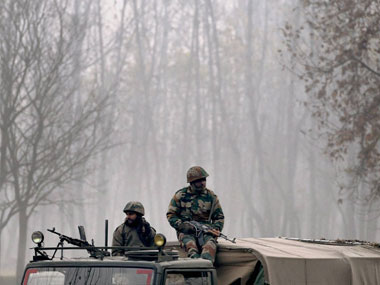The army ought to beef up deployment in the Kishtwar area, to guard an arc from the Keylong pass on the Manali-Leh road to Padar and beyond. As things stand, most of the army deployment under the Northern Command is oriented to the Pakistan threat. To be sure, the current government has upped the deployment on the eastern front in the area controlled by the Northern Command from one brigade to three. Tripling deployment sounds good, but even that barely adds up to a division — not the sort of force that would deter China’s People’s Liberation Army (PLA). [caption id=“attachment_3764595” align=“alignleft” width=“380”] Representational image. PTI[/caption] The reason I point to Kishtwar is that the real ‘great game’ over Jammu and Kashmir is not over human rights or religious solidarity. Pakistani analysts have long acknowledged that water is the most vital geostrategic objective. And, of the three major rivers that flow through the state, the most strategically vital is the Chenab, which flows from Kishtwar. On the one hand, whichever force were firmly entrenched in the mountainous and forested Kishtwar area would be tough to pry out. On the other hand, Kishtwar is an extraordinarily strategic location. It connects with Himachal, the Kashmir Valley, and Ladakh. Of course, at this juncture, the priority that weighs heavy on China and Pakistan is to secure the Economic Corridor project, which passes through the state of Jammu and Kashmir. They would want to secure a legal title by placing India under maximum duress. In the bargain, both would wish to secure as much of the state’s abundant water resources. Extraordinary source The Chenab is formed by the confluence of the Chandra and the Bhaga tributaries. The two rivulets are already quite strong by the time they meet a little above Kishtwar to form the powerful channel of the mighty Chenab. It is over the various projects on the Chenab, mainly between Kishtwar and Ramban, that Pakistan has complained repeatedly. Pakistan views these projects as violating the Indus Water Treaty. More pertinent is the fact that the area around Kishtwar would offer intruders far safer hideouts and billets, and it would be tougher to expel intruders from there than from the environs of the state’s other two major rivers — the Jhelum and the Indus.
The Chandra and the Bhaga meander through beautiful and thickly-forested mountains. Whichever power controls that neck of the woods holds great strategic advantage.
Those forests would provide extraordinary cover to any force that dug in. They also connect to Ladakh on the one hand, to the Kashmir Valley on another, and to Himachal in a third direction. That last direction takes one to the lifeline of Ladakh, the Manali-Leh highway. It has become a far more vital link for the Leh district to connect with the rest of the country than the route through the Kashmir Valley. On the other hand, it is through Kishtwar that the renowned Dogra general Zorawar Singh led his troops on through Padar and over the main Himalayan range to Ladakh. He conquered the vast areas beyond by leading his army from Padar to Padam and then on to Kargil and then Leh on the one hand and Skardu on another. Less exposed The state’s other two major rivers are less strategically exposed than the Chenab. The source of the Indus is in any case in China, and there isn’t much that India does with the water of the Indus as it flows through Ladakh until it crosses the Line of Control beyond Batalik. The Jhelum rises gently at Verinag in the south of the Kashmir Valley and flows majestically north through the Valley. For the most part, it is placid until it passes Baramulla. For most of its course until then, it is flanked by relatively flat plains which do not pose a challenge for a defending army. In any case, the Chenab is the southernmost of these three major rivers of the state. A foreign power would seek to control the Chenab if it wished to cut Indian forces off from the rest of the state — the Kashmir Valley and the vast expanses of Ladakh. Kishtwar district itself is a vast area, the country’s third largest district in area — after Leh and Kargil districts. The area of Kishtwar district alone is half that of the entire Kashmir Valley.


)




